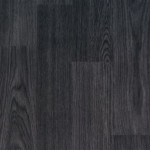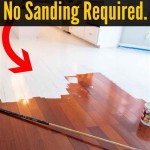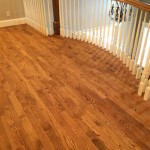Are you looking for an ideal underlayment for your hardwood floors? Cork underlayment might be the right choice for you. This type of underlayment is known for its eco-friendly, soundproofing, and thermal insulation properties. In this article, we will discuss the advantages and disadvantages of using cork underlayment for hardwood floors, as well as the installation process.
Benefits of Using Cork Underlayment
Cork underlayment offers several advantages when used for hardwood floors. Firstly, it is an eco-friendly material, as it is made from the bark of cork oak trees which can be harvested without harming the tree. It is also a great choice for soundproofing, as it absorbs sound and reduces noise levels in the room. Additionally, cork underlayment is a good thermal insulator, which helps to keep the room warm in the winter and cool in the summer. Lastly, it is a durable material, so it will last for many years.
Disadvantages of Using Cork Underlayment
Despite the many benefits of cork underlayment, there are also some drawbacks. Firstly, it is a relatively expensive material, so it may not be a viable option for those on a tight budget. Secondly, it can be difficult to install, as it requires precise measurements and careful cutting. Lastly, cork underlayment is prone to water damage, so it may not be suitable for bathrooms or other areas prone to moisture.
Installing Cork Underlayment
If you decide to use cork underlayment for your hardwood floors, you will need to follow the proper installation process. The first step is to measure the room, as this will determine the amount of cork underlayment you need. Then, you should cut the material to fit the room, using a sharp knife or saw. Once the material is cut, you should roll it out and install it with a roller. Finally, you should use a stapler to secure the material in place.
Tips for Using Cork Underlayment
When using cork underlayment for hardwood floors, there are a few tips that can help you get the best results. Firstly, make sure to use a quality cork underlayment, as this will ensure it is durable and will last for many years. Secondly, be sure to measure and cut the material accurately, as this will ensure a proper fit. Lastly, use a roller to ensure the cork underlayment is properly adhered to the floor.
Conclusion
Cork underlayment is an ideal choice for hardwood floors, as it offers several benefits such as eco-friendliness, soundproofing, and thermal insulation. However, it is also a relatively expensive material and can be difficult to install. To get the best results, make sure to use a quality cork underlayment and follow the proper installation process. With the right preparation and installation, cork underlayment can provide your hardwood floors with long-lasting protection.








![Best Underlayment For Hardwood Floors [Top 5 Picks]](https://i2.wp.com/images-na.ssl-images-amazon.com/images/I/71pYEZPXe6L._AC_SL1000_.jpg)





Related Posts








